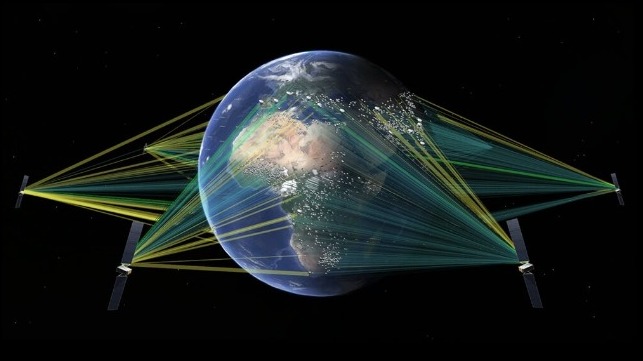Cruising, Connectivity and Collaboration

Connectivity is crucial to enable successful maritime operations. This includes powering the increasing range of onboard software that keeps vessels on the optimal route for safety, efficiency, and emissions in today’s climate-conscious world, as shipping’s decarbonization requirements increase. Connectivity is also critical for safeguarding crew welfare. Providing seafarers access to social connectivity is mandatory in line with The Maritime Labour Convention, which ensures that seafarers can stay connected with their loved ones at home.
The cruise sector is facing huge pressure to remain competitive and deliver the stellar customer experience that’s expected by today’s passengers. Cruise passengers in 2024 want the best of both worlds. They want to travel, enjoy a break from the office and get a change of scenery but also expect the always-on, quality, reliable connectivity they have back home. This includes being able to stream the latest boxset on Netflix, post social media content or even check emails and access other business cloud services as needed while on board.
With passengers expecting high speed Wi-Fi throughout their voyage as standard, the onus is on cruise lines to deliver high throughput, speed, and availability, low latencies, and exceptional bandwidth regardless of location. However, this is not always easy to achieve. Many cruise routes cover vast and remote areas where establishing and maintaining communication infrastructure has historically been challenging, resulting in bandwidth restrictions and coverage restraints when at sea. Solving these challenges requires connectivity providers and cruise operators alike to collaborate and address these demands, rather than working in silos.
Delivering success with a multi-orbit fleet
Multi-orbit constellations enable high speed, high bandwidth, and low latency satellite-based connectivity. This enables cruise operators to meet two key challenges simultaneously: provide customers with the same level of service they would enjoy on land, and power software and other technologies that optimize operations for commercial and sustainability benefits, whilst reliably reporting against emissions reduction targets.
Switching between satellites in medium earth orbit (MEO) and geostationary earth orbit (GEO) to deliver network resiliency, no matter the location or weather conditions at sea. This is critical for cruise passengers or crew who may be taking video calls, streaming movies, or are using software that shares safety, operational and vessel performance information.
SES’ O3b constellation has been used by most major cruise lines for more than a decade, and its second-generation MEO system, O3b mPOWER, is expected to begin service in 2024. SES’ multi-orbit fleet now includes a new offering in partnership with Starlink, which combines the best of GEO, MEO and LEO orbits.
The power of collaboration
Customer and operator demands across the cruise sector are only set to grow in 2024. Passengers expect exciting onboard experiences, constant connectivity, and new routes to remote locations, while cruise lines are under increasing scrutiny to measure and manage their climate impact. Collaboration and partnerships between the cruise industry and connectivity providers are key to staying ahead of these evolving demands and using connectivity to seamlessly achieve stellar guest experiences, enhanced safety, and operational efficiency.
Gregory Martin is VP Maritime Market at SES.
The opinions expressed herein are the author's and not necessarily those of The Maritime Executive.
No comments:
Post a Comment